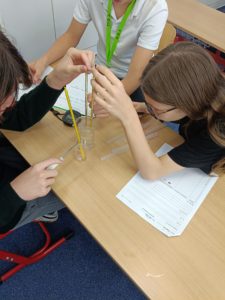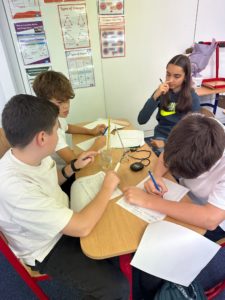STEM: Year 8
STEM Unit: Designing an Ecosystem
At EISB, we believe in engaging students with hands-on, inquiry-based learning experiences. In our MYP2 Science class, we have kicked off the academic year with an exciting STEM unit that blends key concepts from both Biology and Physics. Our focus is on the fascinating world of ecosystems, biodiversity, and the adaptations of species to their environments. Along the way, we’re exploring how these living systems connect to physical principles such as states of matter and heat transfer. By weaving together these interdisciplinary subjects, students gain a deeper understanding of how science is applied in real-world situations.
Our STEM unit culminates in an exciting engineering-based project, where students take on the challenge of designing an ecosystem of their choice. In this project, students will apply the scientific knowledge they have acquired throughout the unit.
In addition to science, this project integrates mathematics, as students will use data to calculate ecological parameters, and analyze how different factors interact within an ecosystem. By applying both scientific and mathematical principles, they will create realistic models of ecosystems and demonstrate their understanding of how living organisms adapt to their surroundings.
Developing Skills Through Mini Projects
Throughout the unit, students have been involved in a variety of mini projects that allow them to manipulate lab equipment and develop essential scientific skills such as build and interpret graphs, manipulate data tables and present experiments developing their public speaking skills and gaining confidence in explaining scientific concepts.
In these mini projects, we also focus on connecting science to real-world scenarios. For instance, we discuss how our understanding of adaptation and biodiversity can help solve real challenges like habitat destruction and climate change. This helps students see the relevance of what they are learning and prepares them for the final project, where they will need to apply this knowledge in creative and practical ways.




This STEM unit is not just about learning facts; it’s about developing lifelong skills and fostering a deep appreciation for the natural world and the principles that govern it. We’re proud to see our MYP2 students grow as scientists, thinkers, and problem-solvers, and we look forward to what they will achieve next.
Stay tuned for the final presentations, where students will showcase their ecosystem models and demonstrate how their knowledge of science and engineering has come together in their projects!


